What Are the Parts of the Brain?
Every second of every day the brain is collecting and sending out signals from and to the parts of your body. It keeps everything working even when we are sleeping at night. Here you can take a quick tour of this amazing control center. You can see each part and later learn what areas are involved with different tasks.

Brain Cells
There are two types of cells in your brain, neurons and glial cells (glia - Greek word for glue). For a long time biologists have thought that the neurons were the only cells that controlled our bodies and were also where our memories are kept. Glial cells were just in the brain to support neurons, insulate them, provide nutrition, and do basic housekeeping. New research is beginning to show that glial cells are doing more than these jobs.
|
Support: Glia cells act as a physical support and protection for neurons. They also help keep the blood-brain barrier which prevents toxic chemicals in the blood from entering the brain. Nutrition: Glia cells help keep the environment around neurons in balance and make sure the right nutrients are available for neurons. Insulation: Glia cells can create myelin, a fatty substance that helps insulate the axons of neurons. This helps keep electrical signals inside the neuron and helps them move faster. Housekeeping: Glia cells can prevent the buildup of toxic chemicals, help destroy viruses and bacteria, and get rid of dead neurons. |
Biologist Dennis McDaniel used a confocal laser scanning microscope (CLSM) to see inside the brain. The rotating image shows many glial cells called astrocytes. |
Brain Anatomy
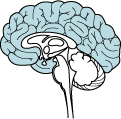 |
Cerebral cortex: The wrinkled outer part of the brain is the largest part of the brain. It is also where we do all our thinking. It is used to read this story and also to do math and any homework you might get from your teacher. This part of the brain also controls your voluntary muscles. These are the muscles used to click a computer mouse button, ride a bike, run a race, or kick a ball. Are you using your left or right brain? There are some scientists that think the right and left sides of the cerebral cortex specialize in different work. The right side works on abstract things like colors, shapes, and music. The left side is busy with math and speaking and is the analytical part. It is also known that the right side of your brain controls the left side of the body and the left side of the brain controls the right. Main jobs: sensory integration, thought, voluntary movement, language, reasoning, perception |
 |
Cerebellum: At the back of the brain, the cerebellum helps you make smooth, coordinated movements. Walking, running, writing . . . without the cerebellum, movement would not happen properly. |
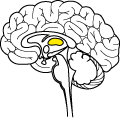 |
Thalamus: With all the activity going on in the brain there needs to be a switching station and this is the job of the thalamus. This part of the brain takes information coming from the body and sends it on to the cerebral cortex. The cerebral cortex also sends messages to the thalamus which then sends the information to other areas of the brain and spinal cord. Main jobs: sensory integration, motor integration, sleep, consciousness. |
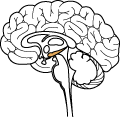 |
Hippocampus: Located deep within your brain, the hippocampus works with the cerebral cortex to create memories. From five minutes ago to five years ago, the hippocampus is responsible for helping you remember everything that happens in your life. The hippocampus also helps you remember how to navigate, or move around, your environment based on how you have moved around in the past. Main jobs: creating memories |
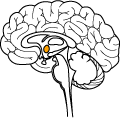 |
Hypothalamus: In your house is a thermostat. This is the control on the wall that you can change to make the room warmer or cooler. The hypothalamus is the thermostat for your body. When you get hot it sends signals to your skin to sweat. If you get cold it makes you shiver and get goose bumps. Main jobs: body temperature, emotions, hunger, thirst, circadian rhythms |
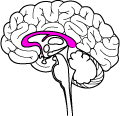 |
Corpus callosum: Connecting the right side of the brain with the left side is the corpus callosum. This lets the two sides of the brain talk to each other. Main jobs: connecting the left and right brain |
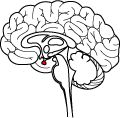 |
Pituitary gland: This tiny part of the brain is about the size of a pea. It is smallest part of the brain and also the one that controls when and how fast we grow. It releases special hormones that help you grow. It also is at work during puberty. Wait, there's more... The pituitary gland also uses hormones to control how much sugar and water is in your body. It also is one of the areas that controls the body's metabolism. It helps control the digestion of food, breathing, and moving your blood around. Without strict control of your body's metabolism it would not be possible to stay alive. Main jobs: controls hormones |
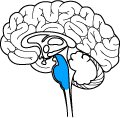 |
Brainstem: The brainstem is a collection of three areas of the brain. These parts are the Medulla, Pons, and the Midbrain. The brainstem is located below the cerebellum and connects the brain to the spinal cord. It has the job of running all the involuntary muscles. These are the muscles you don't consciously control, such as the muscles which make your heart beat. Together, these three parts of the brain help keep us alive by controlling our breathing, digestion, and blood circulation. Main jobs: breathing, heart rate, blood pressure |
 |
Spinal cord: This is the main information highway. All the information from parts of the body move from and to the brain through the spinal cord. It is connected to the brain through the brainstem. It is protected by the vertebral bones that make up the backbone. Main job: moving messages from the brain to the rest of the body. |
Computer animation credit: BodyParts3D, Copyright© 2010 The Database Center for Life Science licensed under CC Attribution-Share Alike 2.1 Japan.
Astrocyte movie credit: Confocal scanning laser image courtesy of Professor Dennis McDaniel.
Read more about: A Nervous Journey
Bibliographic details:
- Article: What's in Your Brain?
- Author(s): Dr. Biology
- Publisher: Arizona State University School of Life Sciences Ask A Biologist
- Site name: ASU - Ask A Biologist
- Date published: 5 May, 2011
- Date accessed:
- Link: https://askabiologist.asu.edu/parts-of-the-brain
APA Style
Dr. Biology. (Thu, 05/05/2011 - 08:41). What's in Your Brain?. ASU - Ask A Biologist. Retrieved from https://askabiologist.asu.edu/parts-of-the-brain
Chicago Manual of Style
Dr. Biology. "What's in Your Brain?". ASU - Ask A Biologist. 05 May 2011. https://askabiologist.asu.edu/parts-of-the-brain
Dr. Biology. "What's in Your Brain?". ASU - Ask A Biologist. 05 May 2011. ASU - Ask A Biologist, Web. https://askabiologist.asu.edu/parts-of-the-brain
MLA 2017 Style
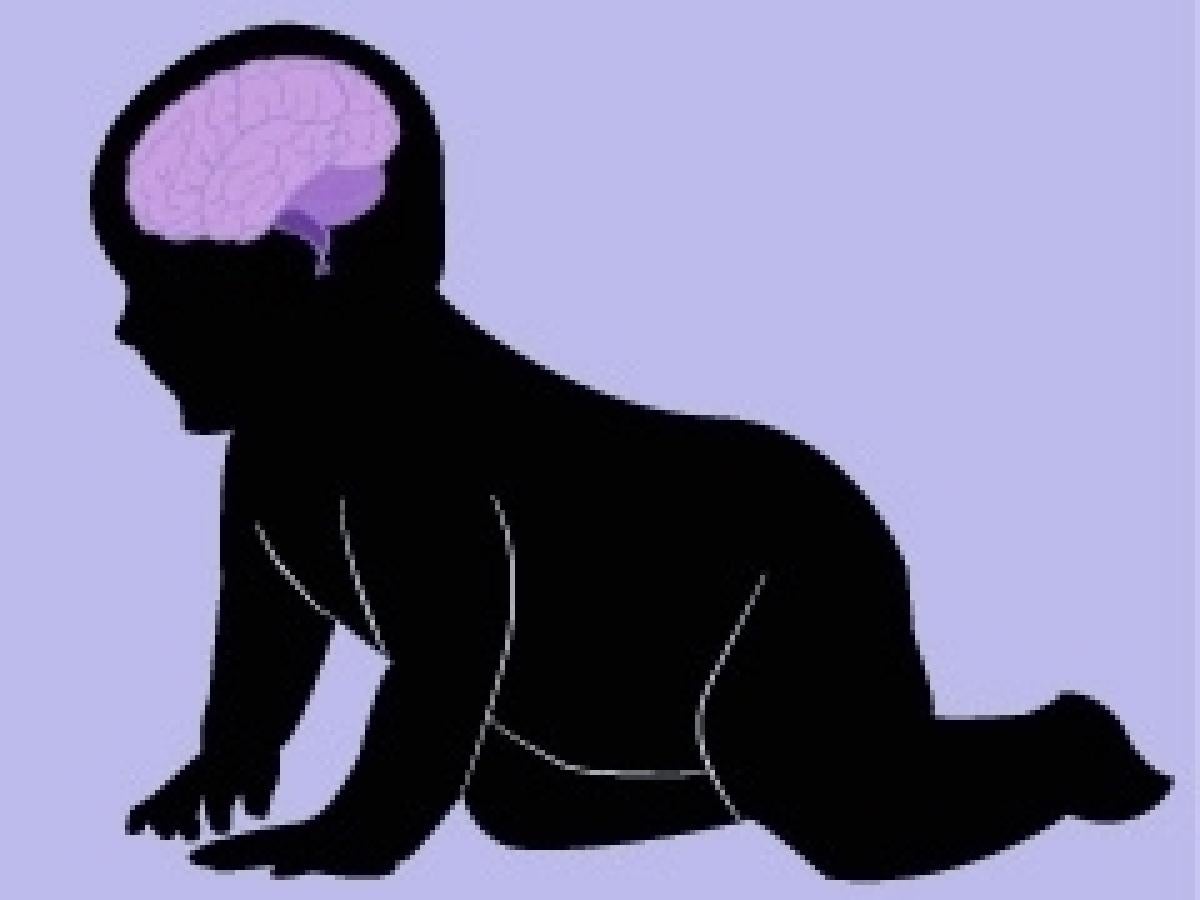
Learn more about growth and size of the human brain at Ask An Anthropologist's story Babies, Birth, and Brains.
Be Part of
Ask A Biologist
By volunteering, or simply sending us feedback on the site. Scientists, teachers, writers, illustrators, and translators are all important to the program. If you are interested in helping with the website we have a Volunteers page to get the process started.




